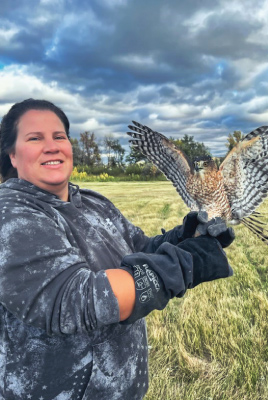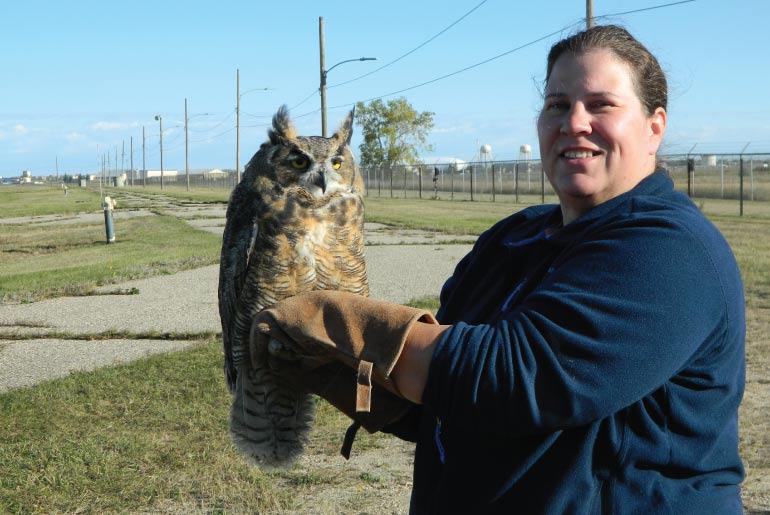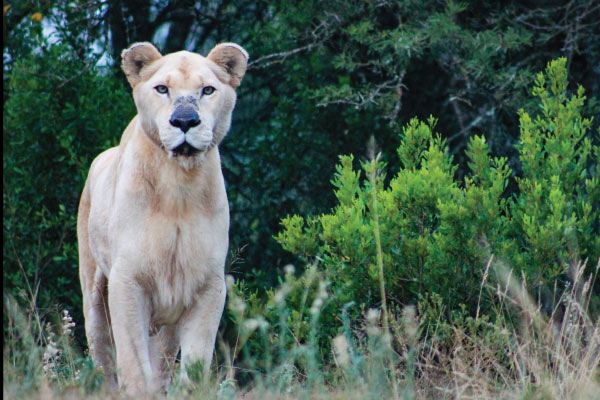Soaring Achievements
Raptor enthusiast and conservationist leads Minot Air Force Base to environmental award.
Handling raptors — predator birds with sharp claws, keen intelligence, and incredible power — has been a new challenge for Dr. Lynda LaFond, ’22, and her team at Minot Air Force Base (AFB).
Through raptor translocation, Lynda and her team safely relocate hawks and owls from high-risk areas, such as near airplanes, to safer environments.
This project is one of several initiatives that helped Lynda’s team earn the 2024 Natural Resources Conservation, Small Installation Award from the Secretary of Defense.
“This is the first time Minot has won the award,” said Lynda, Minot AFB Natural and Cultural Resources Program Manager. “We were surprised and excited.”
Award applicants compete against all branches of the military. Lynda oversaw Minot AFB’s application process, which spanned two years and highlighted the raptor translocation program, pollinator projects, biocontrol measures to reduce invasive species, bat population monitoring, wildlife surveillance, and a base-wide tree inventory.
“The raptor translocation program is the most rewarding,” Lynda said. “We run a multi-step process that requires constant monitoring. We use pigeons as live bait, safely enclosed in cages to attract raptors. The raptor thinks it’s getting food but is captured instead. We tag the hawks and release them back into ecosystems where they belong — just not near B-52s.”
Lynda relies heavily on her team. Midway through the award period, she stepped into the role of Natural Resources Manager, replacing Jesse Busenbarrick. Nicolas Suzda led the bird and wildlife air strike hazard team that helped with raptor translocation, while Lester Nicholas’s pest management team monitored infrastructure threats. “There’s no way I could do these things without those guys and the rest of my environmental section,” Lynda said.

Lynda and her team tag and release the hawks back into ecosystems where they belong.
UND Education + Military Experience
Lynda served in the Air Force for nearly a decade before returning to school at UND. As a graduate teaching assistant, she learned to effectively communicate science to diverse audiences. “I often need to explain my projects to various stakeholders, from budget officers to commanders, and show how they benefit the mission and the airmen,” she said.
When airmen ask, “Why are you catching bumblebees?” or “Why are you identifying every tree on base?” Lynda ties her explanations to what’s important to them. “Finding that connection is key to effective communication,” she said.
Lynda also credits UND’s diverse biology curriculum for preparing her to tackle a wide range of environmental challenges on the job.
Raptor Translocation
Definition
Raptors are birds of prey that hunt for food using sharp claws and beaks, like hawks or eagles. They may accidentally hit planes, endangering people as well as themselves. Experts like Lynda and her team catch the raptors on the Air Force Base and release them into new environments where they can live and hunt free from danger.



